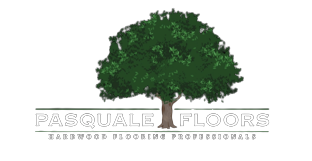
Types of wood flooring: Engineered vs. Solid vs. Pre-finished
So, what IS the difference? This gets confused a lot and often, people use the wrong terminology. Let’s talk about all three.
Solid Hardwood Floors: They can be up to 3/4” thick, usually, the most common width in the Cleveland area is a 2.25” or 3.25” wide. This is, as stated, solid wood throughout. One benefit is solid wood flooring can have up to 1/4” of a “sand-able” top layer, meaning your floors can be sanded up to 6-7 times. This is why you still see the original flooring in the 100-year-old homes throughout the historic areas in Cleveland like Cleveland heights and Shaker heights. Generally, they are installed via a tongue and groove, mechanical connection and most likely nailed. The solid wood flooring is recommended to be installed above grade, meaning 1st, 2nd or 3rd floor applications, not usually installed in basements, due to a higher humidity swings. Solid wood flooring also, has the potential to move the most in Northeast Ohio’s changing seasons, wood is hygroscopic, meaning it moves with the changing seasons, as the humidity/temperatures shift. This is why you see gaps in your wood floor in the winter, when it’s drier, as the moisture escapes and quite often, those gaps close up in the summer, when it is more humid, as the wood absorbs the moisture again.
Engineered Wood Floors: Engineered wood floor are also made of real wood, but include multiple layers of high quality plywood, at the base, to insure a more stable life for the floor (plywood is more stable than solid wood). This is more important when installed in areas with higher humidity, like basements. With the increased humidity, the wood wants to move more, the plywood will stifle that. You will not be able to tell the difference from a engineered wood floor from a solid wood floor, once installed. The only difference is the bottom substrate. Depending on the species, engineered wood flooring can be more affordable because they are using less solid wood material. A general rule is to always use an engineered wood floor when below grade (usually more humid) or gluing to concrete because most concrete is constantly emitting moisture throughout its life.
Pre-finished Wood Floors: A pre-finished floor means that your wood floors were sanded, (potentially stained), and finished with multiple polyurethane (or other finish) coats at the factory. This means you can take the product out of the box and install it in your home, and it is done, no need to bring a sanding crew in, just move your furniture back, after the install. Since the floors will not be sanded, there is a micro bevel (or larger V groove) around the top of the flooring so there are no sharp edges. The “sand-able” wear layer can be up to 1/4” thick, but often is less with pre-finished. A common mistake is to purchase a more affordable thin wear layer, these floors often can not be sanded, or only be able to be sanded once, after that they must be removed and replaced, which can get expensive, especially if the wood has to get cut out around the kitchen cabinets. Because the floor will not be sanded, it is very important that the subfloor (plywood, or OSB) is level. This is your last chance to make the floor flat. Some people do not like to see the micro-bevels on the floor, a solid, sanded wood floor will give you the flattest, most traditional look.
Combinations:
Pre-finished, solid wood floor: This means the floor is all solid wood (no plywood base) and has been factory finished, meaning its ready to install out of the box.
Pre-finished, engineered: This means the floor has a plywood substrate, real wood layer on top that is finished in a factory and ready to install out of the box.
Engineered, Unfinished: This means that floor has a plywood substrate, a real wood layer on top (up to 1/4”), but the top layer is NOT factory finished. Once these floors are installed, they will need to be custom sanded (potentially stained) and finished on site. This is ideal for a larger width board ( 4-7” wide which tend to move more with the changing seasons) in an area that could have higher humidity, like a basement.
